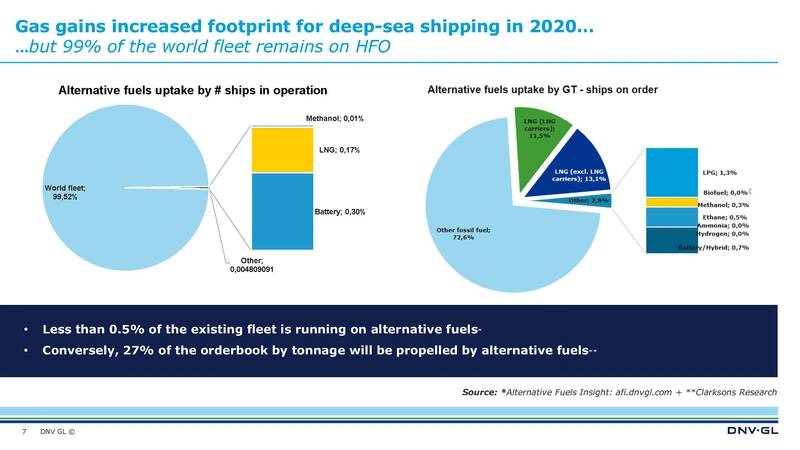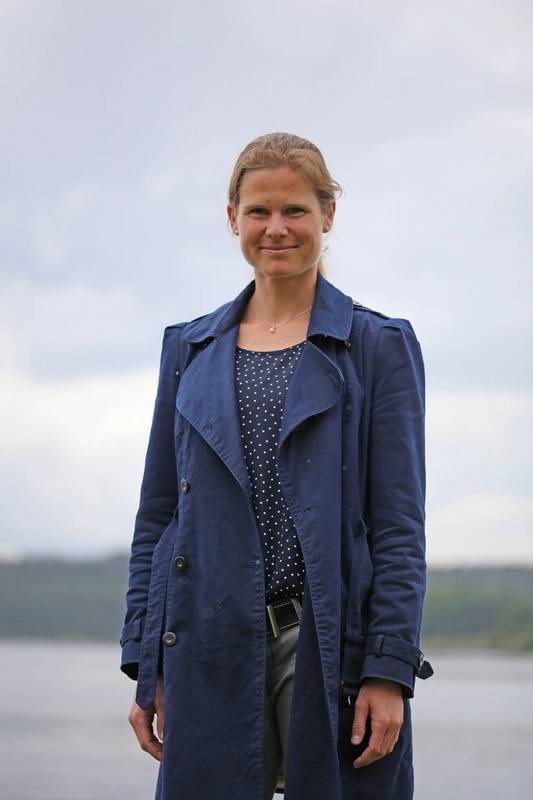DNV GL Advises ‘Mind the (Safety) Gap’ as Maritime Transforms
A new approach to safety is necessary along the maritime industry's rapid transition to a decarbonized, digitally smart future, says classification society DNV GL in a new white paper released this week, and as discussed on Maritime Reporter TV with Knut Ørbeck-Nilssen, CEO of DNV GL - Maritime and Fenna van de Merwe, Principal Consultant at DNV GL, the report’s author.
The white paper entitled “Closing the Safety Gap in an Era of Transformation”, identifies a looming “safety gap” between shipping’s existing approach to safety risks and its ambitions for greater digitalization and the adoption of alternative fuels. According to DNV GL, the new technologies and fuels required to meet the next decades' challenges are also creating a new risk landscape and demanding a new approach to safety.
While the safety message is clear, ship owners today are stretched thin by an industry transformation driven by decarbonization and digitalization, all the while maintaining an eye on safety.
“The problem is that shipping is a fragmented industry, maybe one of the most fragmented transportation industries, and many ship owners have been through a period with really low returns, if any at all,” said Ørbeck-Nilssen. While decarbonization technology and alternative fuels lead the headlines, the world fleet still runs, overwhelmingly, on heavy fuel oil (see chart). Significantly reducing emissions on existing ships is rather limited, and led mostly by slow-steaming. While slow steaming is effective at cutting emissions, if ships slow down too much there will be a breaking point and “at one point in time, it will make you unattractive as a vessel to be transporting goods,” said Ørbeck-Nilssen. New construction offers greater latitude to incorporate energy saving, and today nearly 27% of the fleet on order features an alternative fuel choice.
 Source: DNV GL White Paper “Closing the Safety Gap in an Era of Transformation”
Source: DNV GL White Paper “Closing the Safety Gap in an Era of Transformation”
“The challenge is building, keeping safety, keeping competence level with the seafarers, managing the digital transformation all at the same time,” said Ørbeck-Nilssen. “That is why we put a lot of emphasis in this paper on collaboration. Nobody is interested in competing on safety; it has to be a collective (industry) effort to help all of these smaller ship owners.”
While investing in safety is a cost, that cost during the design and engineering phase is miniscule compared to the cost of a major accident, said van de Merwe. “It shouldn't be an ‘either or’ discussion; it's not investing in digitalization and decarbonization and safety, but it's investing in digitalization and safety by means of looking or incorporating the safety related risks, and whatever's necessary to tackle those safety related risks.”
Breaking out of the Silos
The maritime industry historically has ‘kept its cards close’ in the name of competition, but van de Merwe contends that coming out of those silos, collaborating, has the power to elevate all. The trick, as always, is how to do it.
“(When we talk about) encouraging the industry to collaborate, I'm not saying give away your expertise,” she said. “What I'm saying is use your expertise, stay true to it, and share what it is necessary to build a complete holistic risk picture. Don't work in silos, and draw conclusions just on that specific area that one might be working in, be it a piece of technology or a specific service, but stay true to that service and that expertise and use it in collaborative situations, like in joint industry projects where an overarching party,” serves as a facilitator to ensure that all entities are communicating and working toward a common, collaborative goal.
The Green Shipping Program in Norway, a private public cooperation, is gaining a lot of international attention and participants, said Ørbeck-Nilssen, and he touts it as an example of how organizations from all ends of the market can come together to explore, trial and learn about new technologies and techniques – alternative fuels for example – for the benefit of the individual companies and the industry as a whole. “Recently it (the Green Shipping Program) launched a guidance on the use of ammonia as a fuel, and I think this is a perfect example. It doesn't make sense for a select few ship owners to try to use ammonia as fuel, and thereby have a competitive advantage, because it's all about infrastructure, availability, and price. Releasing this as a joint effort by the industry is sharing the information that is needed to manage using that type of fuel from a safety aspect (among a long list of other commercial considerations).”
 “(When we talk about) encouraging the industry to collaborate, I'm not saying give away your expertise,” said Fenna van de Merwe, Principal Consultant at DNV GL. “What I'm saying is use your expertise, stay true to it, and share what it is necessary to build a complete holistic risk picture. Don't work in silos." Photo: DNV GL
“(When we talk about) encouraging the industry to collaborate, I'm not saying give away your expertise,” said Fenna van de Merwe, Principal Consultant at DNV GL. “What I'm saying is use your expertise, stay true to it, and share what it is necessary to build a complete holistic risk picture. Don't work in silos." Photo: DNV GL

















